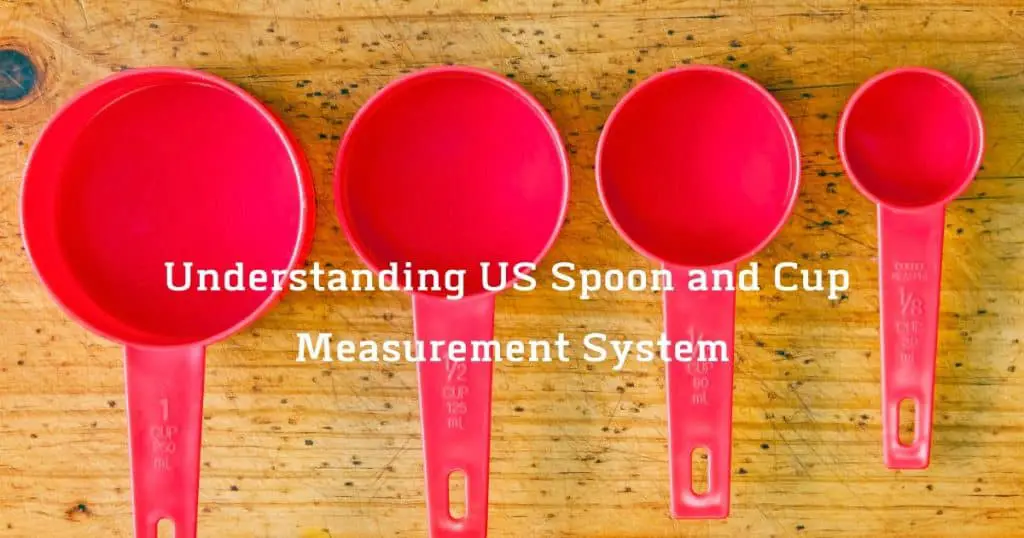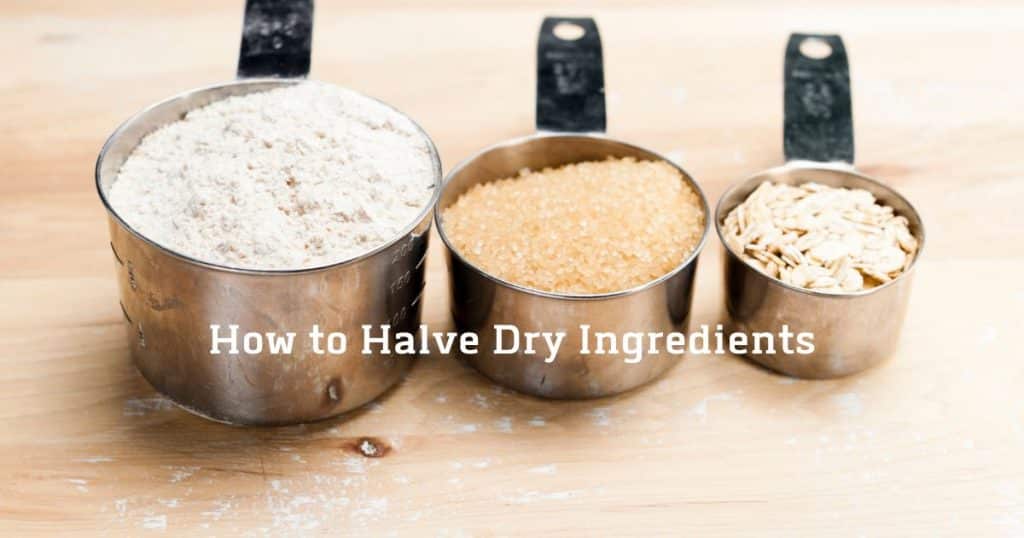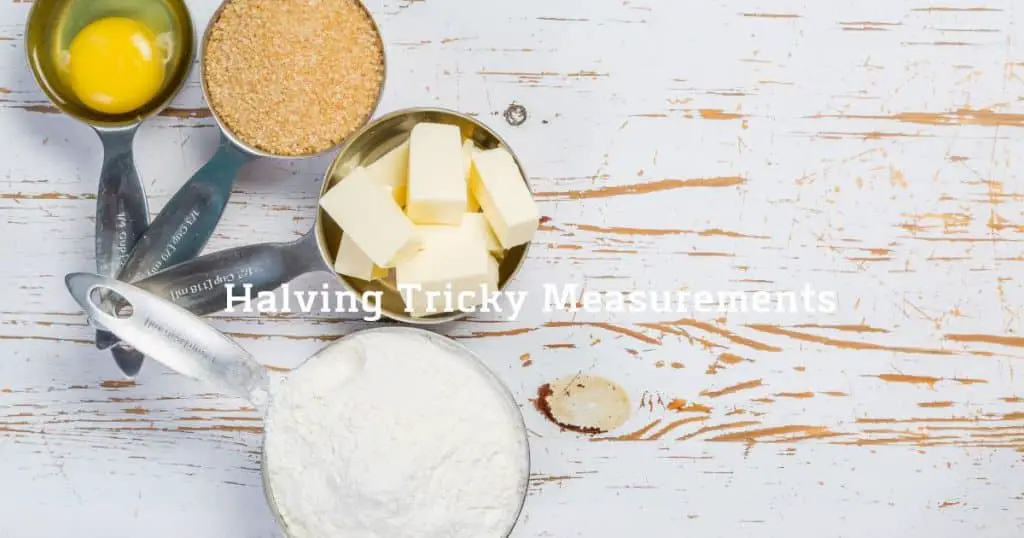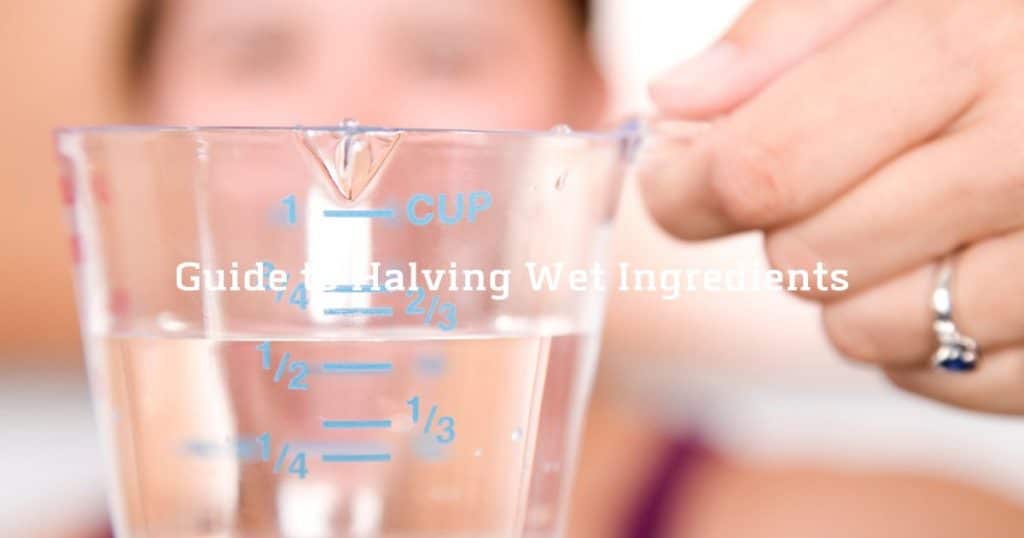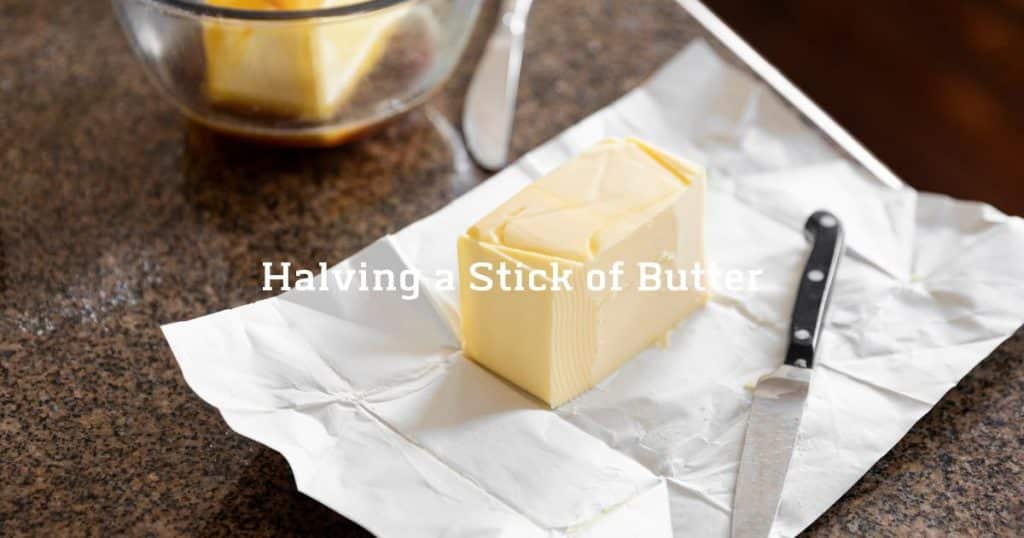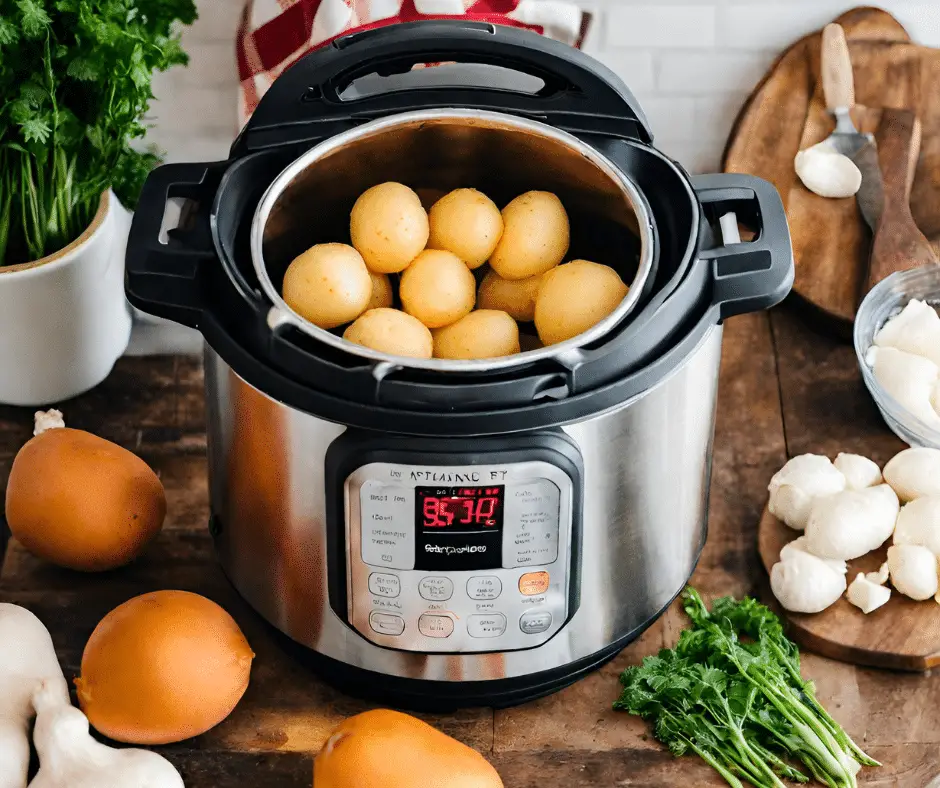Key Takeaway:
- Understanding US Spoon and Cup Measurement System is essential in cooking and baking. It helps to take accurate measurements for better results, taste, and texture.
- Halving dry ingredients is a straightforward process; split the required amount in half. Cutting down common measurements such as half of 3/4 cup is simple; it\'s 3/8 cup.
- Halving tricky measurements such as half of 1/3 cup and half of 1/4 cup can be challenging. For halving 3/4 cup, first, halve it to 3/8 cup and then halve it again, giving 3/16 cup.
Understanding US Spoon and Cup Measurement System
The US Spoon and Cup measurement system is a crucial aspect of cooking. It involves determining the right amount of ingredients required in various recipes. The following table highlights the exact measurements for each spoon and cup:
| Spoon/Cup | Measurements |
|---|---|
| Teaspoon | 5ml |
| Tablespoon | 15ml |
| 1/4 cup | 60ml |
| 1/3 cup | 80ml |
| 1/2 cup | 120ml |
| 1 cup | 240ml |
In addition to the standard measurements, it is worth noting that measuring accurately is essential. Using too much or too little can result in subpar results. It is also crucial to use the correct type of measuring cup. For instance, liquid measuring cups have a spout that allows for accurate measurement when dealing with liquids.
Interestingly, the US Spoon and Cup measurement system dates back to the early 1900s. Fannie Farmer, a teacher and cookbook author, introduced standardized measurements in her cookbook, \”The Boston Cooking-School Cook Book.\” The system then became widely adopted in American kitchens and has since remained a crucial aspect of cooking.
Understanding the US Spoon and Cup Measurement System is vital for anyone who desires to cook like a pro. With this guide, you can confidently measure your ingredients while cooking, achieving the correct taste and texture.
How to Halve Dry Ingredients
When it comes to halving dry ingredients in cooking, I’ve found that some measurements are easy to divide, while others can be tricky math problems. In this segment, we’ll explore some useful strategies for dividing common measurements in half to create a perfectly balanced dish. We’ll also examine some measurements that can be a bit more challenging to halve, as well as some helpful tips and tricks for tackling those tricky measurements. With these techniques, you can achieve balance and precision in all your cooking endeavors.
Cutting Down Common Measurements
When halving measurements in cooking and baking, it is important to know the proper technique for Cutting Down Common Measurements. Here\'s a simple 4-Step Guide to doing it right:
- Write down the original measurement you need to cut in half.
- Divide the measurement by two, using a measuring spoon or cup if necessary.
- Adjust your recipe accordingly.
- Double-check your calculations before proceeding with the recipe to avoid errors.
That being said, there are some commonly used tricky measurements that require specific attention while cutting down: Half of 3/4 cup equals 6 tablespoons; Half of 1/3 cup equals 2 tablespoons plus two teaspoons; and finally Half of 1/4 cup equals 2 tablespoons.
It is important to note that cutting down on wet ingredients would vary based on their thickness and how they are measured. Generally, liquid ingredients should be measured using liquid measuring cups while thick or viscous wet ingredients can be measured using dry-ingredient measuring cups.
Interestingly, the system for measuring flour wasn\'t standardized until the late 19th century when Fannie Merritt Farmer introduced level measurements as a more precise alternative to volume measurements in her Boston Cooking-School Cook Book.
Think halving 3/4 cup is challenging? Try halving a politician\'s promise and you\'ll see what tricky really means.
Halving Tricky Measurements
In baking and cooking, halving tricky measurements requires precision to avoid errors. Follow this 5-step guide to halve your dry ingredients like a pro.
- Identify the measurement you want to halve.
- Divide the quantity in two by using a calculator or dividing mentally.
- If possible, measure on a digital scale, then scoop out half of it.
- If using measuring cups, fill the cup with the ingredient until brimful and level off. Use a straight-edged tool like a spatula or knife to divide it into halves externally in the same cup.
- If there\'s still an element of doubt, reduce both the grams or ounces used by half according to how they are measured.
It is essential to get all ingredients just right in recipes that demand optimum amounts for better results. When halving tough measurements, such as 3/4 cup or 1/3 cup or even quarter-cup sizes, splitting them by weight is more accurate than scooping them out.
To ensure success when cutting down such quantities:
- Practice measuring smaller measurements first to get comfortable.
- Remember that accuracy is essential because even small deviations in measurement could end up ruining your recipe.
- Do not try experimenting with unconventional ways of halving crucial ingredients.
Don\'t let the possibility of tricky measurements intimidate you from achieving baking perfection. Knowing how and what tools to use can make baking a delightful experience.
Ready to tackle the tricky task of halving 3/4 cup? Buckle up, it\'s about to get maths-y up in here.
Half of 3/4 Cup
To halve 3/4 of a cup, measure a 1/4 cup and half it twice or take half of 1/2 a cup. Here are four points to keep in mind while dividing 3/4 cup:
- Use measuring cups: For precise measurements, use measuring cups.
- Halving the fraction: To halve 3/4 cup, you can take either half of 1/2 a cup or two halves of a 1/4 cup measurement.
- Convert to ounces: Alternatively, you can convert the measurement to ounces and halve them directly using a kitchen scale.
- Adjust other ingredients: Remember to adjust other ingredient measurements accordingly if required.
Remember, this method works for any measurement that needs halving. Using other objects like spoons or utensils may result in variations in the final product.
Pro tip: If you often halve measurements while cooking or baking, invest in an adjustable measuring cup or spoon that allows you to measure multiple measurements with one tool.
Cutting 1/3 cup in half is like trying to split a hair with a butter knife, but fear not, we\'ve got you covered.
Half of 1/3 Cup
When halving ingredients in cooking, halving measurements like 1/3 cup can be challenging. Here\'s a five-step guide to reducing 1/3 cup of an ingredient.
- Measure out the 1/3 cup of the ingredient that needs to be halved.
- Place a bowl on a kitchen scale and press \”tare\” or \”zero\” to set the scale to zero.
- Pour the measured amount into the bowl and note its weight on the scale. Divide this number by two.
- Gradually spoon in half of the measurement until it reads half of what was initially weighed.
- If needed, adjust the amount incrementally until you reach half of 1/3 cup.
It\'s important to remember that when using a kitchen scale, it\'s often more accurate than trying to estimate with measuring cups alone. Therefore, it saves some frustration in having to worry about estimating an exact fraction.
When measuring quantities like these, precision is essential not just because tossing additional baking soda into brownies will ruin them but also because subtly different quantities can affect your recipe – so always ensure you\'re following or mending recipes correctly.
I once tried halving melon balls (1/4th inch) for a fruit salad without weighing or measuring them out correctly. It ended up being too much work and took way longer than expected due to not having multiple tools available. I learned my lesson quickly: before starting any recipe, make sure all equipment is ready!
Cutting a recipe in half? Just remember, halving a 1/4 cup is basically just a tablespoon and a half.
Half of 1/4 Cup
Halving Tricky Measurements – Half of 1/4 Cup
To halve 1/4 cup, you need to divide it by two, which results in 2 tablespoons. It is quite a small measurement, so it is recommended to use spoons rather than a measuring cup.
A 4-Step Guide to Halving 1/4 Cup:
- Place the 1/4 cup measurement on a flat surface.
- Using a spoon, carefully scoop out half of the contents.
- Level off the spoon to ensure an accurate measurement.
- Repeat steps two and three if necessary until you have obtained the desired amount of half of 1/4 cup measurement.
When halving smaller measurements such as 1/8 and 1/16 cups, it may be more convenient to use teaspoons instead of tablespoons for added accuracy.
It is essential to accurately halve tricky measurements when baking or cooking recipes that require precise ingredient amounts. A slight discrepancy in ingredient amounts can significantly impact the flavor and texture of your final product.
Once I attempted halving one-fourth of the flour for my cake recipe without following exact measurements. Later, I realized that I had added an irregular amount resulting in the rough texture of my cake. So always follow instructions thoroughly!
Get ready to whet your appetite with this guide to halving wet ingredients.
Guide to Halving Wet Ingredients
When it comes to halving wet ingredients, it can be tricky to get the measurements just right. But don\'t worry, with this guide, you\'ll be halving your wet ingredients like a pro in no time.
First up, we\'ll cover measuring liquids with liquid measuring cups. Learning how to properly pour and measure liquids will ensure you don\'t end up with inaccurate measurements.
Next, we\'ll dive into using dry-ingredient measuring cups for thick or viscous wet ingredients. This hack will save you from having to wash multiple measuring cups and make the process more efficient.
Measuring Liquids with Liquid Measuring Cups
Liquid Measurement Using Liquid Measuring Cups:
To measure liquids accurately in the process of cooking, liquid measuring cups should be used. This reduces errors in measurement and eliminates guesswork.
Steps to Measure Liquids with Liquid Measuring Cups:
- Place the measuring cup on a level surface.
- Pour the liquid into the cup until it reaches the desired level, making sure that you read the measurement at eye-level.
- If there are air bubbles in the liquid, tap gently to remove them.
- For messy liquids such as honey or oil, coat the inside of the measuring cup with non-stick cooking spray before pouring in your liquid.
- Use a rubber spatula to scrape off excess on top when filling up a liquid measuring cup
- Pour slowly while watching for overflow and then adjust as needed by pouring some back into its container if necessary
Additionally, for maximum accuracy, aim to measure cold liquids – this will ensure that there is no inconsistency of volume caused by fluctuations temperature.
Measuring wet ingredients using dry measuring cups can lead to overpouring leading to incorrect measurements and unpleasant outcomes; hence choosing appropriate tools for measuring every ingredient is critical. Successful baking and recipe ratios depend on precision. Research enables one to understand more about various measurement units used in cooking.
If you thought measuring thick or viscous wet ingredients with dry-ingredient measuring cups was wrong, then congratulations, you just earned a degree in culinary misconceptions.
Using Dry-Ingredient Measuring Cups for Thick or Viscous Wet Ingredients
When it comes to measuring thick or viscous wet ingredients, using dry-ingredient measuring cups can be a viable option. Here\'s how you can do it:
- Choose the right cup: Use a dry-ingredient measuring cup that can adequately hold the volume of the ingredient you are measuring.
- Grease the cup: Coat the inside of the cup with cooking spray or oil to prevent the ingredient from sticking and ensure easy release.
- TAP gently: Fill the greased cup with your desired amount of thick or viscous wet ingredient, and tap it gently on your countertop to eliminate any air pockets.
- Level off: Use a spatula or knife to level off any excess ingredient at the top of the measuring cup.
- Be precise: Consider using an additional spoon for meticulous accuracy when required.
- Clean up – Ensure that no residue is left in all utensils used.
It\'s crucial to note that this method may not yield perfect results in comparison with liquid measuring cups designed specifically for measuring liquids; however, it can work well as an alternative.
Additionally, when dealing with sticky substances such as honey, corn syrup or peanut butter, consider using liquid measuring cups coated in non-stick sprays instead of dry-ingredient ones for optimal results.
Cutting a stick of butter in half is easy, but halving an egg requires some finesse – just make sure to beat it well before splitting it in half.
How to Halve Ingredients Not Measured with Cups/Spoons
When it comes to cooking, precise measurement is key to a delicious end result. But what if you come across a recipe that requires, say, 3/4 cup of an ingredient and you need to halve it? How do you measure half of 3/4 cup?
In this part of the article, we\'ll cover how to halve ingredients that are not measured with standard cups or spoons. Specifically, we\'ll be discussing how to halve an egg and how to halve a stick of butter. By following these tips, you\'ll be able to accurately adjust recipes to accommodate smaller portions.
Halving an Egg
To divide an egg in half for baking or cooking purposes, there are certain steps to follow. The process is straightforward and can be easily performed at home with minimal fuss.
- Crack the egg into a small bowl
- Whisk the egg\'s yolk and white together.
- Using a tablespoon, scoop out half of the mixture.
- Transfer it to another container for use.
- If halving multiple eggs, repeat the above steps for all eggs required.
It should be noted that if a recipe calls for just the yolk or white of an egg, halving the complete egg is not necessary. Instead, separate the yolk from half an egg and do the same hitherto with the white part.
Pro-tip: Be sure to use fresh eggs when dividing them in half as older eggs tend to have thinner whites that may break more easily during separation.
Cutting butter in half is like cutting a family drama in half – it\'s messy and can leave you feeling guilty.
Halving a Stick of Butter
To divide a stick of butter in half is an essential skill in the kitchen. This task may appear starkly straightforward; however, getting precise measurements can cause issues if not undertaken properly.
Here is a 3-step guide to halving a Stick of Butter:
- remove your stick of butter from the packaging and place it on a chopping board.
- Cut the stick of butter in half evenly by making a cut along its length.
- If you only need half of the amount specified in a recipe that uses whole sticks, then measure the remaining amount using tablespoon measures to get an accurate result.
When cutting the butter into smaller portions, it\'s essential to divide it as evenly as feasible to yield exact outcomes in your cooking or baking.
It’s essential to always remember that when you are trying different approaches different results may arise because of factors such as humidity and temperature which could influence how much liquid or dry ingredients are absorbed and whether they set correctly.
Growing up, my mom taught me how to bake chocolate chip cookies for our annual family gatherings. I remember being nervous about measuring all the ingredients precisely, especially halving sticks of butter for rather challenging recipes. Nonetheless, with her guidance, we were able to figure out how to stabilize ingredient amounts and still have tasty treats by dividing everything, including tricky items like eggs and butter accurately.
Using the Metric System in Baking and Cooking
Baking and cooking require precise measurement techniques to yield the desired taste. Utilizing the metric system enables one to measure ingredients accurately. Precision in measuring ingredients ensures perfect baking and cooking results, making the metric system a crucial tool in culinary art.
When using the metric system in baking and cooking, you need to understand the basic units used, including grams, milliliters, and liters. There are also conversion techniques to use when dealing with dry, liquid, and solid ingredients. Understanding the metric system leads to more accurate and consistent baking and cooking outcomes.
Notably, using the metric system also offers convenience to international recipes that utilize metric units. It makes it easier to understand and replicate foreign recipes that would be challenging, confusing, or inaccurate if translated into the imperial system. By using the metric system, you increase your recipe collection and add variety to your culinary skills.
Pro Tip: Always have a digital scale and a set of metric measuring cups and spoons at hand to ensure accurate measurement of ingredients. This will make your baking and cooking experience more enjoyable and your outcomes consistent.
Five Facts About \”What is Half of 3/4 Cup in Cooking\”:
- ✅ Half of 3/4 cup is 6 tablespoons (or 1/4 cup plus 2 tablespoons). (Source: Team Research)
- ✅ To halve 1/3 cup, use 2 tablespoons plus 2 teaspoons. (Source: Team Research)
- ✅ To halve 1/4 cup, simply use 2 tablespoons. (Source: Team Research)
- ✅ Standard measuring cups and spoons can be used to double or halve ingredients in most recipes. (Source: Team Research)
- ✅ Wet ingredients are measured with a liquid measuring cup and can be halved using the same measurements as dry ingredients. (Source: Team Research)
FAQs about What Is Half Of 3 4 Cup In Cooking
What is half of 3/4 cup in cooking?
Half of 3/4 cup is 6 tablespoons or 1/4 cup plus 2 tablespoons. Alternatively, you can use 1/3 cup as a substitute for half of 3/4 cup.
How do I accurately measure half of 3/4 cup in cooking?
To accurately measure half of 3/4 cup, use a measuring cup and measure out 6 tablespoons or 1/4 cup plus 2 tablespoons. Double-check your measurements for accuracy.
Can I use a kitchen scale to measure half of 3/4 cup?
Yes, you can use a kitchen scale to measure half of 3/4 cup. Convert the measurement to grams using a conversion chart and measure out half of the corresponding weight.
How do I convert dry measurements when halving a recipe?
When halving a recipe that calls for dry measurements, use the conversion chart provided in the blog post to determine the desired amount. For example, to halve 1 cup of flour, measure out 1/2 cup.
How do I convert liquid measurements when halving a recipe?
When halving a recipe that calls for liquid measurements, use a measuring cup or a kitchen scale to measure out half of the desired amount. For example, to halve 1 cup of milk, measure out 1/2 cup.
Can I use spoons to measure half of 3/4 cup in cooking?
Yes, you can use measuring spoons to measure half of 3/4 cup. Measure out 6 tablespoons or 1/4 cup plus 2 tablespoons using the conversion chart in the blog post.
